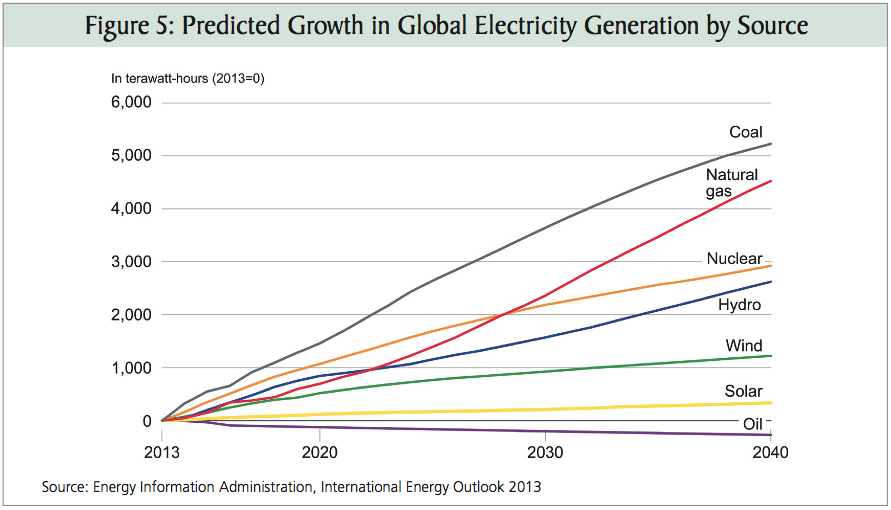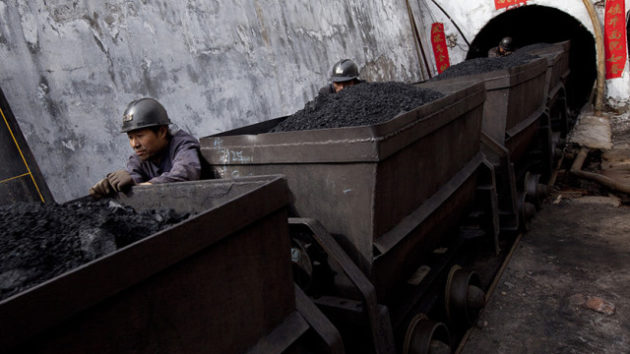Global Coal Use Growing Faster Than Any Other Energy
Over the last decade, global coal use grew by 968 million tonnes of oil equivalent. That is 4 times faster than renewables, 2.8 times faster than oil and 50 per cent faster than gas. That’s hardly justification for a requiem.
As Master of Oxford University’s Baillol College in the second half of the 19th century, Benjamin Jowett once submitted a contentious issue to a vote among Baillol’s dons and was displeased with the result. “The vote is 22 to 2. I see we are deadlocked.”

Jowett was determined to ensure that empirical facts were not going to deny him the result he wanted.
When it comes to the coal industry, environmental campaigners and fellow travellers in the media are busy wishing away facts that don’t suit their arguments.
‘‘The end of coal’’ was the tagline for a Four Corners’ “analysis” of the coal sector last night. It was Episode 14 of Series 3 of the Four Corners’ critique of the mining industry.
Consistent with the established practice, the conclusion of the piece was predetermined and the narrative arranged accordingly.
Facts were in short supply, wishful thinking was not. A trustee of the Rockefeller Foundation, which funds activist groups and co-funded the development of an Australian anti-coal strategy in 2011, was wheeled out as an objective observer.
So the release of BP’s 2015 Statistical Review of World Energy in recent days is timely. Although BP is no friend of coal, the report provides an objective analysis of developments in global energy.
Let’s test some of the anti-coal crusaders’ claims with some objective facts.
First, it is claimed that coal is a dying energy source and its use is being phased out. Not so. According to the BP Review, over the decade to the end of 2014, coal use grew by 968 million tonnes of oil equivalent. That is 4 times faster than renewables, 2.8 times faster than oil and 50 per cent faster than gas. That’s hardly justification for a requiem.
Second, investors are not walking away from coal. Yes, some universities and some funds have decided to divest some of their stocks in fossil fuels. That’s their prerogative. But the overwhelming majority have not and will not divest of coal stocks. Sure the share prices of coal companies fall during a commodity downturn due largely to oversupply. So do the share prices of oil companies and grain producers when prices fall in those sectors.
The empirical evidence suggests that interest in the sector from lenders and investors remains strong. One of the anti-coal movement’s own groups, Bankwatch, has complained that global financing for coal mining rose to $US66 billion in 2014, up from $US55bn in 2013 and a 360 per cent increase from 2005.
The third claim is that renewable energy is capable of replacing fossil fuels, including coal.
Not likely. In 2014, if the world had relied on renewable energy like wind, solar and biomass for primary energy, then the world would have had just 9 days of heat, light and artificial horsepower.
Fourth, campaigners claim that coal has no future in a low emissions world. Not true. New generation technologies are slashing CO2 emissions from coal fired plants by as much as 40 per cent. These high efficiency low emissions plants are being rolled out in China, Japan and elsewhere in Asia. And the first large scale carbon capture and storage coal plant in Canada has slashed its CO2 emissions by 90 per cent. The Intergovernmental Panel on Climate Change has estimated the cost of meeting global reduction targets will be 138 per cent higher without the deployment of carbon capture and storage.
The campaigners also claim that major consuming nations are turning away from coal. But the International Energy Agency predicts that China will add 450 gigawatts of coal fired power over the next 25 years. That’s 40 per cent larger than the entire US coal fleet. As the International Energy Agency has predicted, “China will be the coal giant for many years in the future”.
Energy starved India is also expanding its coal use and is expected to become the world’s largest coal importer in the next decade. The anti-coal crusaders are confused when it comes to India, which, by the way, still has 300 million people without access to electricity.
Their intellectual callisthenics are driven largely by their opposition to the Adani project in the Galilee Basin, which will export high-quality thermal coal to India.
First the campaigners argued that India’s power needs could be supplied by renewable energy. Really? Wind, solar and biomass accounted for 2 per cent of India’s energy needs in 2014. That’s about one week of India’s primary energy needs.



Leave a Reply
Want to join the discussion?Feel free to contribute!